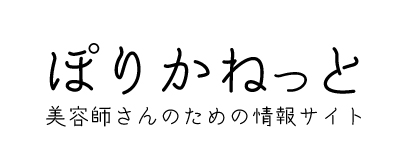(5) Knit PANEL
I am a hairdresser and a business owner. I have a team of 45 staff members, and I have been training them one by one. It is a lot of work to train each hairdresser so that they can provide a certain level of service quality to the customers, and it takes a lot of patience.
As humans, not like objects, we have different emotions and personalities.
Some are skillful and some are not. We have developed a training tool called “PORICA,” and sell it as well as offer classes. We also have established a hair-cutting school, where we provide education for elementary school students and older.
Using PORICA, I was able to teach twists, gradations, same-length, and layered cut by cutting paper, but when I thought of a better practice tool that would be closer to hair, knitting wool came to my mind. Once we used knitting wool for PORICA, but it was difficult to handle because it was made by twisting two or three strands of wool, so it caught when we ran a comb through it. In addition, the educational effect weakened since the knitting wool stretched when pulled and the cut line became uneven.
After continuous research, we were able to make a final product like real hair by specially processing the wool with tannin that came from nature. Finally, we have developed a yarn that can be combed smoothly and has beautiful lines when cut with scissors. The texture of cutting is really like cutting hair. It also helps us to notice when the panel of the hair is twisted.
We have been receiving positive feedback about this training tool from the elementary school students at our school, so I believe that those who find it too costly to practice cutting and who struggle to understand the technique will feel more comfortable with this tool.
Many people find it difficult to practice cutting, but the reason why it becomes difficult is because they unconsciously twist the panel of hair when cutting. When it is twisted and cut, the silhouette of the hairstyle becomes ragged.
This product makes it possible to run a comb through it and feel it more realistically, so you can understand the meaning of both the twisting and the silhouette of the haircut. However, you can’t create hairstyles with this tool, so you need to use a cut wig at the final part of your training.
I hope that diligent young learners who are struggling with practicing cutting will read this blog. My hope is that those young people will soon become hair designers and enjoy working with smiles on their faces, as well as those of their customers.




